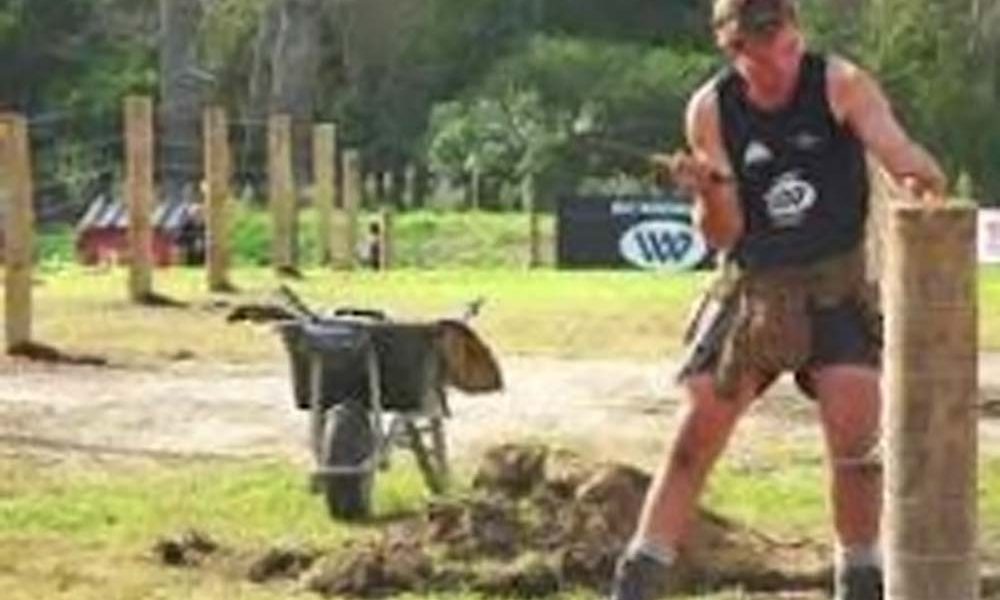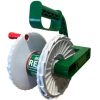
Fencing Contractors seem to have an affinity with 4WD utes. It’s a well-known fact that a ute is commonly the top-ranked item to be factored into one’s asset business startup.
Indeed, throughout a fencing contractor’s business lifespan, a 4WD ute continues to receive top billing. It doesn’t seem to matter if it’s a pimped out (accessory wise) latest model, or a cherished dependable 1997 model with a few seasoned dings. At least one of our members has owned a Toyota Hilux from new, that went round the clock and ticked over again from zero.
Fencing Contractors often work in amazing locations, and their access to many enviable properties means they could also double as tourist guides with off-road adventures.
Given this combination and having been dragged along with the whole 4WD scene throughout my married life, an opportune conversation with Scott and Anna Heasley, down at the Dunedin Conference in 2022, meant organising a 4WD trip for our members through some of Scott’s client’s properties – most notably the iconic MacDonald Downs – was a no brainer.
Having been in the Lees Valley, I asked about linking this up and ending the trip in Oxford, and Scott saw to that as well. We had options of starting in the Awatere Valley, Marlborough or perhaps coming down through the Rainbow from Nelson, but it was decided for us when Mike Renner, Renner Fencing, jumped on board, organising a start location from his yard at the start of the Awatere Valley.
Thus were the origins of the FCANZ great 4WD adventure in November 2023; meeting up at Mike and Olivia Renner’s, with a quick look through one of Renner’s yards, up through the Awatere Valley, overnight in Hamner, the next morning down through into MacDonalds Station, out through the Lees valley into Oxford, with dinner at Rangiora. That’s a quick summary, though this misses a number of key elements.
With 17 vehicles attending, the attendees came from as far south as Balclutha and Invercargill, and as far North as Auckland, with Masterton (Tim McKay) and Galatea (Scott Graham) also represented. Along with the usuals, it was nice to see some faces of members who we hadn’t seen before, which was one of the interesting aspects. We also had two partners attending – Brendon Crequer from Waratah and Ivan Beattie from Beattie Insulators. Following a group photo, the group was tasked with getting to know each other and were told that there would be a name quiz at the end of the trip, which I was determined to win, but I think Georgia Douglass might have taken out those honours.
We drove in convoy up the Awatere Valley Road with Mike and Terry Renner in the lead and John and Carol Noakes as tail-end Charlies. When you’re driving through an area as scenic as the Molesworth, there’s often a question as to the history of the area and what goes on in terms of farming, etc. That’s one of the reasons this trip was so interesting, stopping off and having morning tea in the Upcot Station shearing quarters (thank you Friends of Seddon School, who supplied morning tea and lunch), then looking through the shearing shed (Upcot supplies merino wool to Icebreaker). Next, we walked across over to the old saleyards for the district, which Terry Renner helped to build in 1986 and used to hold 7,600 sheep. They ceased using the yards when foot and mouth entered the area.
Upcot Station’s Bill Stevenson met us further up the road, the third generation of stewardship of the Station, with one of Bill’s daughters, Louise, taking on the running of it. Bill’s talk was an interesting insight into the station’s running, stock numbers and breeding, and the challenges and success of the calicivirus in controlling rabbits in that area. Upcot has a horse breeding program with some very nice horses leaning over the fence begging for a new home (some were for sale).
On the Upcot saddle (1,200 metres above sea level), we stopped to look at the views, and naturally running along the saddle was a Waratah brand fence, complete with Jio Star posts and wire. Brendon gave a talk about Waratah’s performance in high country such as this. Ivan Beattie also talked about his insulator products, again with their suitability for high country fencing.
At Molesworth Station, we stopped for lunch at the Cobb Cottage, which was precluded by an interesting talk from Jim Ward, who manages Molesworth as a productive 182,000 hectare farming and recreational unit. Molesworth is 60 kilometres in length and about the same in width. Jim talked about a concentrated effort towards lessening stock numbers, changing farming practices and improving economic returns in doing so, while balancing farming with recreational usage and sustainability. Horses are still widely used on Molesworth, and as we drove along, we saw numerous loading banks where the horses were trucked along to mustering points for offloading. Three of the shepherds were involved in the talks, and it was interesting to hear how they coped with the isolation. The future of Jim’s farm lease is in jeopardy given DOC’s purchase of the land from Landcorp, with a review being undertaken as to the future of managing the land, which, from listening to Jim’s knowledge and passion for putting the land first, was incomprehensible.
After a quick drive around the Molesworth infrastructure, we were on our way towards Hamner, with the amazing scenery becoming tarnished with wilding pines. There was evidence of some attempts to control them, but it’s a huge problem.
FCANZ Administration Manager Jeanette Miller had organised the motel and a buffet dinner. Some beers amongst a tailgate meeting, aka standing at the back of the ute in the motel car park with a beer in your hand, helped dull the pain of overly expensive drinks at the bar, but the accommodation was very nice, and dinner was tasty. We woke up to a moister day with fresh snow on the mountain tops and predicted rain, which was a shame as Scott and Anna, our Day 2 leaders, had a good offroad route organised once we got into MacDonald Downs (11,333 hectares).
On the way in, we stopped at Waikari Kitchen in Waikari to pick up a prepackaged morning tea and lunch (recommendation – stop there, never drive past if open), and then we pulled up at the beautiful MacDonald Downs homestead and gardens for a hugely entertaining talk by Bill Paterson, and a look over the Station’s maps and historical photos.
Moving along, we started towards an excursion up over saddle, but unfortunately, the wet combined with long grass wasn’t feasible for several of the vehicles, along with not wanting to leave damage, so we turned around and made towards a picturesque batch of bush alongside a river for a combined morning tea/lunch. A light drizzle came across, but it was hardly noticed as we all grouped together and talked about all sorts.
Scott had gone beyond the call of duty, or should that be the call of nature, by installing a long drop for the ladies. Given that we were miles from anywhere, this was a feat involving a digger, a 44-gallon drum, an outhouse, a dunny seat, and a No 8 wire solution for a toilet roll holder. Apparently Scott realised, as the outhouse was being lowered into position, that it was latched from the inside. One can only imagine the robust debate that followed, as to whether to climb up through the dunny hole and who was going to do that, to be able to unlatch the door.
Onward and upward, then descending, we drove, entering the Lees Valley, stopping at Wharfdale Station. Along the way, we saw a good deer fencing job, which member George Williams had been a contractor on. On hitting the main road at Oxford, a few headed off, but the majority of us had dinner at the Plough Hotel in Rangiora, with thankfully cheaper drinks.
The trip was well organised by Mike and Terry Renner, Scott and Anna Heasley and Jeanette. John and Carol Noakes did a lot of gate opening and closing, helped out by Tony White.
Two things stood out on this trip. One: what a nice bunch of people were on the trip and how well everyone mingled. Two: the calibre of Bill Stevenson, Jim Ward, Bill Paterson and their families, past and present. If High Country farming is in the hands of these types of people who are proud of their heritage and contributions, their commitment to sustainability and improvement, then high country farming in New Zealand remains a strength in the future of farming.
Such was the enjoyment of the trip that an across-Station off roader on/near the Wairarapa coastline is in the early stages of planning. The timing will be confirmed after the landowners and route have been established.
Article written by Debbie White
Published in the FCANZ News in WIRED Issue 72 / March 2024 by Fencing Contractors Association NZ
You may also like: A day for the brave & hardy
Read WIRED online
Follow us on Facebook
© Fencing Contractors Association NZ (FCANZ)


















